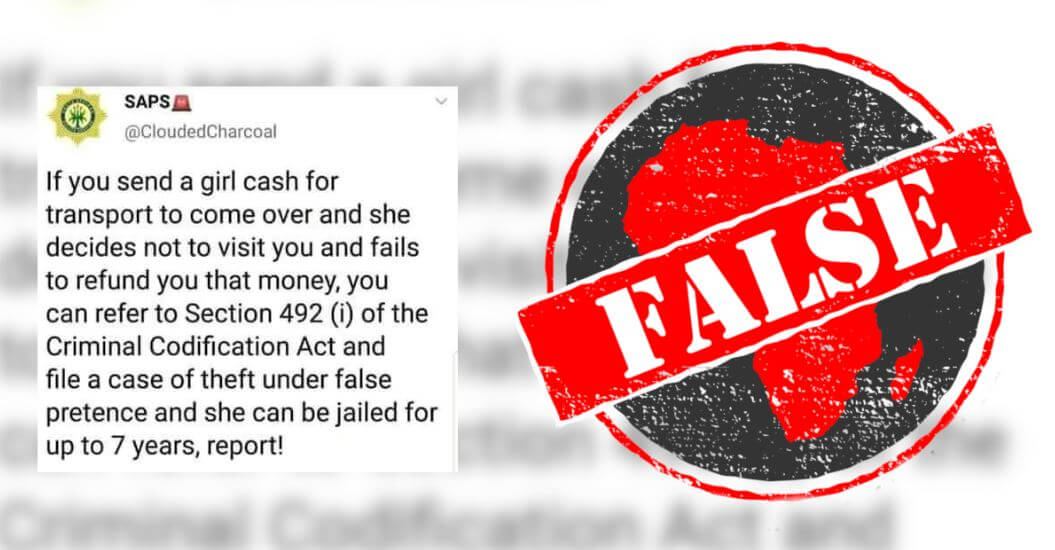Section 492i of the Criminal Codification Act of South Africa deals with the possession of plates or other articles for the purpose of making infringing copies of works protected by copyright. The provision states that any person who knowingly makes or has in their possession any plate or other article for the purpose of making infringing copies of any work in which copyright subsists shall be guilty of an offence and liable on conviction to a fine or to imprisonment for a period not exceeding seven years, or to both such fine and imprisonment.
What Does Section 492 i Of The Criminal Codification Act in South Africa Mean?
According to Man’s NOT Barry Roux on X (formerly Twitter), section 492 i of the criminal codification act in South Africa states that “if you send a girl cash for transport to come over and she decides not to visit you and fails to refund you that money, you can refer to Section 492 (i) of the Criminal Codification Act and file a case of theft under false pretence and she can be jailed for up to 7 years.”
If you send a girl cash for transport to come over and she decides not to visit you and fails to refund you that money, you can refer to Section 492 (i) of the Criminal Codification Act and file a case of theft under false pretence and she can be jailed for up to 7 years.
— Man’s NOT Barry Roux (@AdvoBarryRoux) March 29, 2023
About Section 492 i Of The Criminal Codification Act in South Africa
The statement that “if you send a girl cash for transport to come over and she decides not to visit you and fails to refund you that money, you can refer to Section 492 (i) of the Criminal Codification Act and file a case of theft under false pretence and she can be jailed for up to 7 years” is false.
Section 492 (i) of the Criminal Codification Act of South Africa states that:
Any person who knowingly makes or has in his possession any plate or other article for the purpose of making infringing copies of any work in which copyright subsists shall be guilty of an offence and liable on conviction to a fine or to imprisonment for a period not exceeding seven years, or to both such fine and imprisonment.
This section of the Act deals with copyright infringement, not theft.
Theft under false pretence is a crime that occurs when someone obtains property from another person by making a false representation of fact. In the case of the scenario described in the statement, the girl would have to have made a false representation of fact in order to be convicted of theft under false pretence. For example, she would have to have falsely represented that she intended to visit the person who sent her the money for transport, when she actually had no intention of doing so.
However, even if the girl did make a false representation of fact, it is unlikely that she would be convicted of theft under false pretence. Theft under false pretence is a serious crime, and the courts are reluctant to convict people of this crime unless the prosecution can prove that the person who made the false representation intended to permanently deprive the victim of their property.
In the case of the scenario described in the statement, the girl would likely be able to argue that she intended to refund the money to the person who sent it to her, but that she simply changed her mind. It is also possible that the girl could argue that she was not permanently depriving the person of their property, as the money was still in her possession and she could have refunded it at any time.
Image Courtesy: africacheck.org
